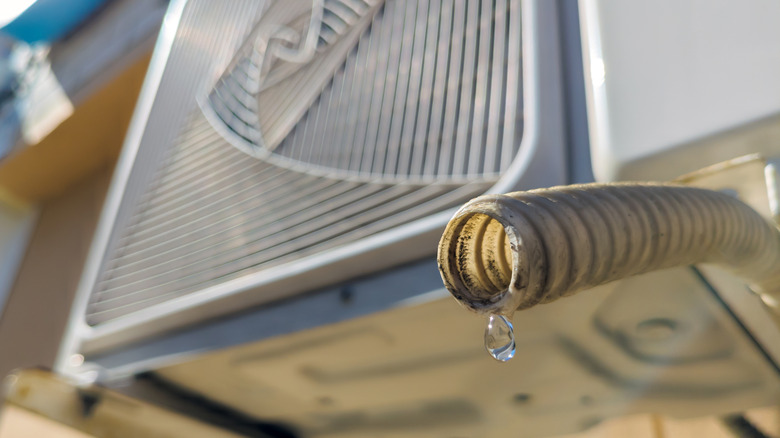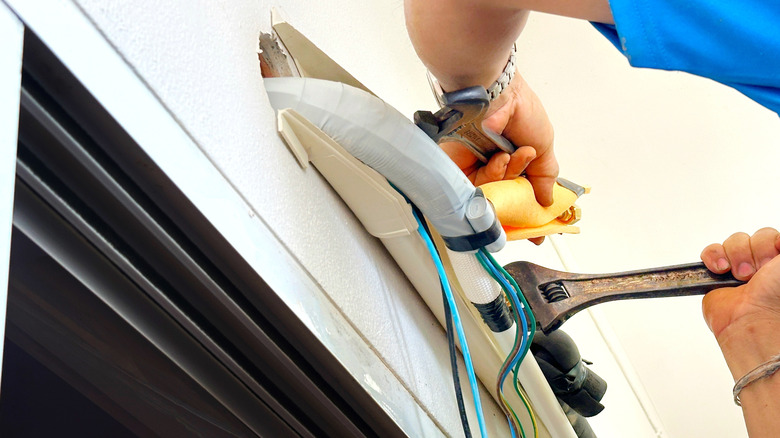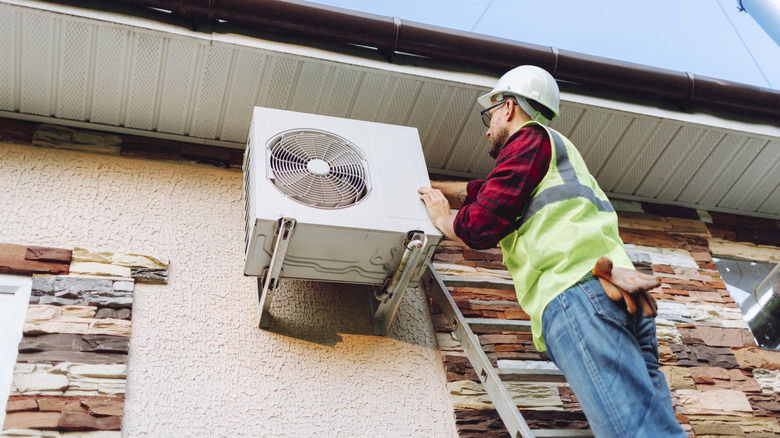How To Unclog Your AC Drain The Right Way
Many homes need air conditioners, particularly in the sweltering summer months. Although ACs run quietly in the background, they can still have their share of maintenance problems no matter what air conditioner brand it is. A clogged AC drain line is among the most frequent issues that homeowners deal with. When this occurs, condensation has nowhere to go, which can cause serious damage to your home or system, as well as water leaks and musty odors.
Thankfully, many people can unclog the AC drain line on their own with just a few simple tools and some basic knowledge. Although the procedure isn't very challenging, it does call for some safety measures and close attention to detail. Untreated clogged drain lines can cause water to back up into your house or activate your unit's shutoff mechanism, both of which can be expensive to repair.
Get distilled vinegar, a funnel, a wet/dry vacuum, and, if you want, a pipe cleaner or stiff wire before you start. Additionally, before starting any work, make sure your system is off. Starting with the safe access to the drain line, we'll take you through each step of getting your air conditioner operating efficiently once more.
Start with access and safety
Safety is always the first step. To avoid any electrical mishaps while working, first turn off your air conditioner at the thermostat and then at the breaker. Find the drain line of your air conditioner after it has been turned off. Usually, this is a white PVC pipe located close to your furnace or indoor air handler. It may protrude from the wall, particularly in installations in utility closets or attics.
Examining the drain pan beneath the evaporator coils is the next thing you should do. A clog is definitely present if there is standing water in the pan. Before continuing, remove any extra water with towels or a quality wet-dry vacuum. Next, find the drain line access point, which is typically a T-shaped vent close to the air handler with a detachable cap.
It's time to look for any obvious obstructions. To remove any debris, shine a flashlight into the pipe and, if required, gently probe it with a pipe cleaner or stiff wire. This could be sufficient to clear small obstructions. Suction, however, is your best option for larger obstructions or debris further down the line, which leads us to the following step.
Clearing blockages and flushing the line
Connect your wet/dry vacuum's hose to the outside end of the drain line, which is usually found close to the foundation of your house, and securely seal it with duct tape or a cloth. To remove any buildup or sludge, run the vacuum for approximately one minute. For deeper clogs that are impossible to reach manually, this is frequently the most efficient method.
Once the vacuum has finished, use the access vent to pour a cup of distilled vinegar into the drain line. To help dissolve any leftover debris, let it sit for half an hour before flushing with water. One can also use liquid bleach, hot water, or hydrogen peroxide, although overusing bleach can eventually damage your HVAC components and PVC piping. Depending on how blocked the pipe is, the order in which you flush the line and unclog it with the wet-dry vacuum cleaner can be switched.
Repeat this cleaning procedure every one to three months to avoid future blockages, particularly when using the air conditioner extensively. Frequent maintenance increases your unit's efficiency and lifespan. It might be time to hire a professional for a more comprehensive inspection if, even after cleaning, you continue to notice leaks or humidity problems.


